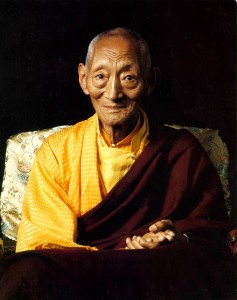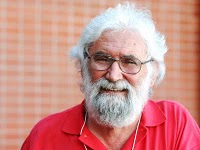Belief
Kalu Rinpoche, the Zen Master and the Orange
“Reality is merely an illusion, albeit a very persistent one.”
~ Albert Einstein

Kalu Rinpoche (1905 – May 10, 1989)
Ron’s Introductory Comments.
Is “reality” absolute or relative?
And how should the answer to that question influence our worldly ways?
Our phenomenal Universe is miraculous, marvelous, and meaningful. But it is ever changing and impermanent – a “relative reality” of space, time and causality which some mystics call illusion, samsara, or maya.
It arises and appears in an unchanging mysterious matrix of Infinite Potentiality, which some call “Absolute Reality”.
When aware or awakening to this distinction between Absolute and relative reality, we may realize that while we are apparent entities in this world, our Source and ultimate identity transcends this world; that we are ‘in this world but not of this world’.
Thus realizing the impermanence and relativity of our phenomenal reality, we may ponder on its meaning and purpose and, accordingly, on how to best behave herein: viz. what thoughts, words or deeds (if any) are most appropriate and skillful?
SillySutras.com is dedicated to raising perennial questions about how to best be in this world. Even spiritual masters and great scholars can disagree on answers to such questions.
So, ultimately, each of us must intuitively answer such questions for ourselves.
In the opening chapter of “Thoughts Without a Thinker”, concerning psychotherapy from a Buddhist perspective, author psychotherapist Mark Epstein recounts this apt anecdote about a meeting at the home of a Harvard University psychology professor of two prominent teachers of Buddha-dharma with different ideas about dharma.
“Thoughts Without a Thinker”, by Dr. Mark Epstein – Excerpt From Chapter One.
“In the early days of my interest in Buddhism and psychology, I was given a particularly vivid demonstation of how difficult it was going to be to forge an integration between the two. Some friends of mine had arranged for an encounter between two prominent visiting Buddhist teachers at the house of a Harvard University psychology professor. These were teachers from two distinctly different Buddhist traditions who had never met and whose traditions had in fact had very little contact over the past thousand years. Before the worlds of Buddhism and Western psychology could come together, the various strands of Buddhism would have to encounter one another. We were to witness the first such dialogue.
The teachers, seventy-year-old Kalu Rinpoche of Tibet, a veteran of years of solitary retreat, and the Zen master Seung Sahn, the first Korean Zen master to teach in the United States, were to test each other’s understanding of the Buddha’s teachings for the benefit of the onlooking Western students. This was to be a high form of what was being called ‘dharma’ combat (the clashing of great minds sharpened by years of study and meditation), and we were waiting with all the anticipation that such a historic encounter deserved. The two monks entered with swirling robes — maroon and yellow for the Tibetan, austere grey and black for the Korean — and were followed by retinues of younger monks and translators with shaven heads. They settled onto cushions in the familiar cross-legged positions, and the host made it clear that the younger Zen master was to begin. The Tibetan lama sat very still, fingering a wooden rosary (mala) with one hand while murmuring, “Om mani padme hum” continuously under his breath.
The Zen master, who was already gaining renown for his method of hurling questions at his students until they were forced to admit their ignorance and then bellowing, “Keep that don’t know mind!” at them, reached deep inside his robes and drew out an orange. “What is this?” he demanded of the lama. “What is this?” This was a typical opening question, and we could feel him ready to pounce on whatever response he was given.
The Tibetan sat quietly fingering his mala and made no move to respond.
“What is this?” the Zen master insisted, holding the orange up to the Tibetan’s nose.
Kalu Rinpoche bent very slowly to the Tibetan monk near to him who was serving as the translator, and they whispered back and forth for several minutes. Finally the translator addressed the room: “Rinpoche says, ‘What is the matter with him? Don’t they have oranges where he comes from?”
The dialog progressed no further.”
What is Life? – Quotes
“What is life? It is the flash of a firefly in the night.
It is the breath of a buffalo in the wintertime.
It is the little shadow which runs across the grass and loses itself in the sunset.
~ Crowfoot

What is Life? – Quotes
“Life is like an onion; you peel off layer after layer
and then you find there is nothing in it.”
~ James Gibbons Huneker
“In three words I can sum up everything I’ve learned about life.
‘It goes on.’”
~ Robert Frost
“All the art of living lies in a fine mingling of letting go and holding on. ……
To live remains an art which everyone must learn, and which no one can teach.”
~ Havelock Ellis
“In the book of life, the answers aren’t in the back.”
~ Charlie Brown
“If A equals success, then the formula is: A = X + Y + Z,
where X is work, Y is play, and Z is keep your mouth shut.
~ Albert Einstein
“Human beings, vegetables, or cosmic dust –
we all dance to a mysterious tune,
intoned in the distance by an invisible piper.”
~ Albert Einstein
“The goal of life is to make your heartbeat match the beat of the universe,
to match your nature with Nature.”
~ Joseph Campbell
“Life is a long lesson in humility.”
~ James M. Barrie
“..the powerful play goes on, and you will contribute a verse.”
~ Walt Whitman, “O Me! O Life!”, Leaves of Grass
“Life is the hyphen between matter and spirit.”
~ Augustus William Hare and Julius Charles Hare
“Life is a whim of several trillion cells to be you for a while.”
~ Author Unknown
“When we remember we are all mad,
the mysteries disappear and life stands explained.”
~ Mark Twain
Your Religion Is Not Important


Introduction. The following is a brief dialogue between the Dalai Lama and Brazilian theologist Leonardo Boff, one of the renovators of the Theology of Freedom, as recounted by Boff:
Boff’s Narative.
“In a round table discussion about religion and freedom in which
Dalai Lama and myself were participating, at recess I maliciously, and also with interest, asked him:
“Your holiness, what is the best religion?”
“I thought he would say: “The Tibetan Buddhism” or “The oriental religions, much older than Christianity”
“Dalai Lama paused, smiled and looked me in the eyes ….which surprised me because I knew of the malice contained in my question. “He answered:
“The best religion is the one that gets you closest to God.
It is the one that makes you a better person.”
“To get out of my embarrassment with such a wise answer, I asked:
“What is it that makes me better?”
“He responded:
“Whatever makes you
more Compassionate,
more Sensible,
more Detached,
more Loving,
more Humanitarian,
more Responsible,
more Ethical.”
“The religion that will do that for you is the best religion”
“I was silent for a moment, marveling and even today
thinking of his wise and irrefutable response:
“I am not interested, my friend, about your religion
or if you are religious or not.
“What really is important to me is your behavior in
front of your peers, family, work, community,
and in front of the world.”
“Remember, the universe is the echo of our actions and our thoughts.
“The law of action and reaction is not exclusively for physics.
It is also of human relations.
If I act with goodness, I will receive goodness.
If I act with evil, I will get evil.
“What our grandparents told us is the pure truth.
You will always have what you desire for others.
Being happy is not a matter of destiny.
It is a matter of options.”
Finally he said:
“Take care of your Thoughts because they become Words.
Take care of your Words because they will become Actions.
Take care of your Actions because they will become Habits.
Take care of your Habits because they will form your Character.
Take care of your Character because it will form your Destiny,
and your Destiny will be your Life
… and …
“There is no religion higher than the Truth.”
You Tube presentation of this dialogue: